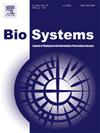红细胞同质聚集(rouleaux形成)的机制和生物学意义:温度依赖的水从细胞和大分子的熵释放
IF 1.9
4区 生物学
Q2 BIOLOGY
引用次数: 0
摘要
在前抗生素时代,感染通常比今天更频繁和严重。Robin f本文章由计算机程序翻译,如有差异,请以英文原文为准。
Mechanism and biological significance of erythrocyte homoaggregation (rouleaux formation): temperature-dependent entropic liberation of water from cells and macromolecules
In the pre-antibiotic era, infections were usually more frequent and serious than today. Robin Fåhraeus (1888–1958) examined the erythrocyte sedimentation rate (ESR) test for infections, which was normally carried out in vitro with freshly drawn blood. His extensive studies on the mechanism and physiological significance of the enhanced sedimentation of erythrocyte aggregates (rouleaux) in disease included in vivo simulation. This led him to propose an explanation for the finding of long white strips (“fibrin coagula”) within the blood vessels of those who had died from infections. The surge of serious infections in pandemic times has likely kindled a reemergence. He further speculated that (i) the weak aggregation of red blood cells (RBCs) followed the liberation of water molecules from their surfaces, and (ii) the importance of their aggregation, which was induced by changes in serum proteins (not necessarily antibodies), extended beyond the clinic. In modern times these changes have led to immunologically significant entropic interpretations of infection-associated aggregations, whether cellular (e.g., RBC) or molecular (i.e., macromolecular polymerizations). Thus, rouleaux formation displays a process at the cellular level that can proceed in parallel at a less visible macromolecular level. It has been proposed that, when intracellular, aggregations would discriminate between self and not-self proteins in the crowded cytosol. Favoured by an associated pyrexia, this could lead, by mechanisms to be determined, to the preferential loading of peptides from proteins deemed “foreign” for presentation as major histocompatibility complexes (MHCs) to specific clones of immune cells.
求助全文
通过发布文献求助,成功后即可免费获取论文全文。
去求助
来源期刊

Biosystems
生物-生物学
CiteScore
3.70
自引率
18.80%
发文量
129
审稿时长
34 days
期刊介绍:
BioSystems encourages experimental, computational, and theoretical articles that link biology, evolutionary thinking, and the information processing sciences. The link areas form a circle that encompasses the fundamental nature of biological information processing, computational modeling of complex biological systems, evolutionary models of computation, the application of biological principles to the design of novel computing systems, and the use of biomolecular materials to synthesize artificial systems that capture essential principles of natural biological information processing.
 求助内容:
求助内容: 应助结果提醒方式:
应助结果提醒方式:


